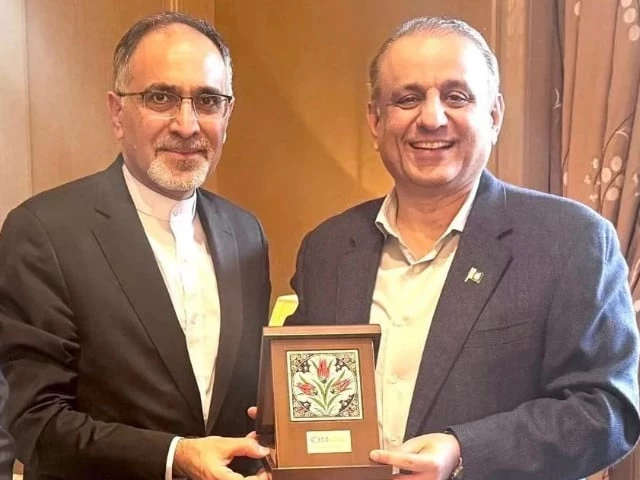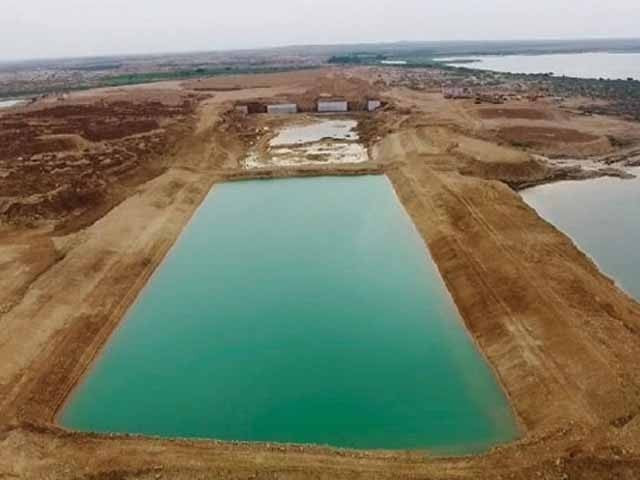Business
From ‘cheap food and curry houses’ to upscale dining: The rise of Indian restaurants in the U.S.

Semma restaurant in New York, NY.
Courtesy: Steven Hall
Executive Chef Vikas Khanna has plated hundreds of thousands of dinners over the past 20 years — and he’s seen firsthand just how much Indian cuisine has evolved in the U.S.
Khanna, a world-renowned Indian restaurateur, created Junoon, his high-end Indian restaurant in New York City, more than a decade ago to wade deeper into sophisticated Indian dining, ultimately earning a Michelin star for the restaurant — one of the first Indian restaurants to earn the distinction.
As an immigrant in a post-9/11 America, Khanna said his bosses early in his career had been hesitant to branch out and experiment deeper with the broad canvas of Indian cuisine. Instead, he stuck to what he knew worked for the American palette: stereotypical menus and flavors like butter chicken and tikka masala.
But when American chef Anthony Bourdain visited Junoon for the first time, Khanna said he got the wakeup call of his career.
“He said, ‘I don’t understand why you guys want to camouflage your food to please the Western world,'” Khanna told CNBC. “He was saying, ‘You need to patronize the cuisine.’ And that became the foundation of Bungalow in many ways.”
Bungalow, Khanna’s next and highly popular venture in New York, is one of a growing number of Indian upscale and fine-dining restaurants popping up in the U.S. What was once takeout menus and buffets, Khanna said, has transformed into a business segment aiming to rival that of Italian and French cuisine and is garnering growing interest by the day.
According to Jimmy Rizvi, Khanna’s business partner at Bungalow, reservations for the restaurant sell out within 30 to 90 seconds of going live, with nightly waitlists averaging more than 1,000 people. The restaurant opened less than two years ago but consistently serves 300 to 400 dinners each night, becoming a top 10 restaurant in New York City on reservations platform Resy, Rizvi said.
“I definitely think that there’s a knowledge base that’s increasing; there’s more awareness with Indian food,” Rizvi, who also owns the restaurant Gupshup, told CNBC. “And there’s different cuisines within the Indian cuisine … that people are getting aware about.”
Bungalow’s Chef, Vikas Khanna.
Courtesy: Jimmy Rizvi
Tracking the rise
Khanna, who has been in the American restaurant scene for more than two decades, said he’s seen the entire landscape shift from “cheap food and curry houses” to sophisticated sit-down establishments.
Fine dining overall has seen a significant upswing over the past few years, Circana foodservice analyst David Portalatin told CNBC, as a post-pandemic appetite for a dining experience beyond just food has seen a boom.
Despite macroeconomic pressure with inflation and a pullback in consumer spending, Portalatin said customer visits to fine dining restaurants in July were up 5% year-over-year.
“One of the bright spots across the restaurant landscape right now is fine dining,” he said. “It’s evidence that the American consumer is once again desiring these unique and differentiated experiences outside the home.”
Along with that, Portalatin said younger consumers, like Generation Z and millennials, have a growing interest in global dishes with their “quest for flavors.” That opens the door for exploring cuisines like Indian food.
According to data from market research firm Datassential, new Indian restaurant openings in December 2024 hit 115, up from just 54 in September 2018. Currently, the firm counts 154 upscale Indian dining restaurants in the U.S. compared with 101 in January 2018.
Bungalow restaurant in New York, NY.
Courtesy: Jimmy Rizvi
Resy CEO Pablo Rivero told CNBC that he’s also seen demand for high-end Indian restaurants widen over the past few years.
“Modern Indian restaurants are redefining the category with ambitious menus and inventive formats — and diner demand for these elevated experiences shows no signs of slowing down,” Rivero said. “It’s a clear sign that diners are eager to explore experience-driven, innovative expressions of Indian cuisine at the highest level.”
And while growing American interest in global cuisines has taken off, the Indian American population has also mirrored that growth. According to the Pew Research Center, the Indian population in the U.S. has increased by roughly 3.1 million, growing about 174% since 2000.
That population has also seen a rise in affluence, making a high median household income of more than $151,000 in 2023, compared with just a median of over $105,000 for Asian American households overall, according to Pew.
Growing investor interest
As reservations at Indian restaurants begin to sell out even faster, investors are also looking to secure a seat at the table.
Just this month, popular U.K. Indian restaurant chain Dishoom gained private equity backing as it prepares to scale to the U.S. next year.
L Catterton, backed by LVMH, announced it was acquiring a minority stake for an undisclosed amount in Dishoom, marking the restaurant group’s first outside investment. The firm adds Dishoom to its growing slate of restaurant investments, including Japanese Kobe beef chain Kisshokichi and Spanish casual dining brand Goiko.
The new deal reportedly values the restaurant at roughly $400 million. L Catterton and Dishoom did not respond to CNBC’s requests for comment.
Bungalow’s Indian cuisine in New York City.
Courtesy: Jimmy Rizvi
Roni Mazumdar, with the James Beard Award-winning Indian restaurant Semma, said he’s seen a direct increase in investor interest as upscale Indian restaurants have boomed over the past few years.
Unapologetic Foods — the company behind many popular New York restaurants including Semma, Dhamaka, Adda and more — is having “continuous conversations” with outside investors, Mazumdar told CNBC, but even having those talks marks a significant change from when the group first entered the restaurant scene.
“I don’t think anyone saw Indian cuisine as a viable option until now,” Mazumdar said. “There are folks who we have consistent dialogues with who I don’t think five years ago would have even thought about the idea of, ‘Oh, it could be an interesting business model to look at.'”
Mazumdar said the landscape is “shifting rapidly” as more investors take notice.
“I wouldn’t call this a trend,” he added. “To take one of the oldest cuisines in the world – I think it’s an inevitability. It’s a matter of time.”
Emphasizing regional specificity
The Indian Restaurant Association of America identified hyper-regional flavors as one of its top 2025 Indian restaurant trends as chefs dig into the hundreds of local cuisines that dot the subcontinent.
Each of the restaurants from Mazumdar and Unapologetic Foods Chef Chintan Pandya, including Semma, emphasizes regional cuisines, rather than the typical northwestern Indian menus of decades past.
“I think we see a very interesting pattern where there’s a sense of curiosity towards finding out what a community is about through the lens of food,” Mazumdar said. “And I don’t think 20 years ago that was the case.”
Semma, for example, which was ranked No. 1 on The New York Times’ 2025 best restaurants list, explores the cuisine of South India, specifically the state of Tamil Nadu.
“I think one of the glorifying reasons that Semma is doing insanely great or something path-breaking is because it touches that nerve of Indian food which is cooked in India,” Pandya said. “That’s the entire belief, or the standard, or the vision of our company, where we will touch and cook the actual Indian food which we ourselves love to eat.”
Semma restaurant in New York, NY.
Courtesy: Steven Hall
Avtar Walia, the owner of Tamarind in Tribeca, has been in the American restaurant scene for decades. When he first immigrated to America in the ’70s, he couldn’t figure out why Indian restaurants weren’t at the same level as Italian and French restaurants.
By adding in more regional dishes and classic Indian street food, Walia said he began to see Indian restaurants — including his own eateries — change from typical buffets to sleek, elegant dining.
“From the last 47 years, I still follow the same pattern. Every month, month and a half, I change my lunch menu,” Walia said. “We take one of the regions … so that people can try different dishes, authentic dishes, and they don’t have to go anywhere else. And this worked very well for me.”
Walia estimated that nearly 95% of his clientele are regulars, with his restaurant becoming a staple for Wall Street business meetings.
And for Khanna over at Bungalow, the lines outside the restaurant just keep getting longer.
His rattan chairs have seated famed Indian celebrities like members of India’s billionaire Ambani family and Bollywood stars, as well as American bigwigs like Amazon founder Jeff Bezos, who visited the restaurant last year.
“When he came, he kept saying, ‘I know why every Indian in Seattle is on the phones at 8 a.m. PT to snag a reservation, because for them, this is not just visiting a restaurant — it’s a pilgrimage back home,'” Khanna said. “And that really stayed with me.”
Business
Pakistan’s crisis differs from world | The Express Tribune
1729471601-0/image-(8)1729471601-0-640x480.webp)
Multiple elite clusters capture system as each extracts benefits in different ways
Pakistan’s ruling elite reinforces a blind nationalism, promoting the belief that the country does not need to learn from developed or emerging economies, as this serves their interests. PHOTO: FILE
KARACHI:
Elite capture is hardly a unique Pakistani phenomenon. Across developing economies – from Latin America to Sub-Saharan Africa and parts of South Asia – political and economic systems are often influenced, shaped, or quietly commandeered by narrow interest groups.
However, the latest IMF analysis of Pakistan’s political economy highlights a deeper, more entrenched strain of elite capture; one that is broader in composition, more durable in structure, and more corrosive in its fiscal consequences than what is commonly observed elsewhere. This difference matters because it shapes why repeated reform cycles have failed, why tax bases remain narrow, and why the state repeatedly slips back into crisis despite bailouts, stabilisation efforts, and policy resets.
Globally, elite capture typically operates through predictable channels: regulatory manipulation, favourable credit allocation, public-sector appointments, or preferential access to state contracts. In most emerging economies, these practices tend to be dominated by one or two elite blocs; often oligarchic business families or entrenched political networks.
In contrast, Pakistan’s system is not captured by a single group but by multiple competing elite clusters – military, political dynasties, large landholders, protected industrial lobbies, and urban commercial networks; each extracting benefits in different forms. Instead of acting as a unified oligarchic class, these groups engage in a form of competitive extraction, amplifying inefficiencies and leaving the state structurally weak.
The IMF’s identification of this fragmentation is crucial. Unlike countries where the dominant elite at least maintains a degree of policy coherence, such as Vietnam’s party-led model or Turkiye’s centralised political-business nexus, Pakistan’s fragmentation results in incoherent, stop-start economic governance, with every reform initiative caught in the crossfire of competing privileges.
For example, tax exemptions continue to favour both agricultural landholders and protected sectors despite broad consensus on the inefficiencies they generate. Meanwhile, state-owned enterprises continue to drain the budget due to overlapping political and bureaucratic interests that resist restructuring. These dynamics create a fiscal environment where adjustment becomes politically costly and therefore systematically delayed.
Another distinguishing characteristic is the fiscal footprint of elite capture in Pakistan. While elite influence is global, its measurable impact on Pakistan’s budget is unusually pronounced. Regressive tax structures, preferential energy tariffs, subsidised credit lines for favoured industries, and the persistent shielding of large informal commercial segments combine to erode the state’s revenue base.
The result is dependency on external financing and an inability to build buffers. Where other developing economies have expanded domestic taxation after crises, like Indonesia after the Asian financial crisis, Pakistan’s tax-to-GDP ratio has stagnated or deteriorated, repeatedly offset by politically negotiated exemptions.
Moreover, unlike countries where elite capture operates primarily through economic levers, Pakistan’s structure is intensely politico-establishment in design. This tri-layer configuration creates an institutional rigidity that is difficult to unwind. The civil-military imbalance limits parliamentary oversight of fiscal decisions, political fragmentation obstructs legislative reform, and bureaucratic inertia prevents implementation, even when policies are designed effectively.
In many ways, Pakistan’s challenge is not just elite capture; it is elite entanglement, where power is diffused, yet collectively resistant to change. Given these distinctions, the solutions cannot simply mimic generic reform templates applied in other developing economies. Pakistan requires a sequenced, politically aware reform agenda that aligns incentives rather than assuming an unrealistic national consensus.
First, broadening the tax base must be anchored in institutional credibility rather than coercion. The state has historically attempted forced compliance but has not invested in digitalisation, transparent tax administration, and trusted grievance mechanisms. Countries like Rwanda and Georgia demonstrate that tax reforms succeed only when the system is depersonalised and automated. Pakistan’s current reforms must similarly prioritise structural modernisation over episodic revenue drives.
Second, rationalising subsidies and preferential tariffs requires a political bargain that recognises the diversity of elite interests. Phasing out energy subsidies for specific sectors should be accompanied by productivity-linked support, time-bound transition windows, and export-competitiveness incentives. This shifts the debate from entitlement to performance, making reform politically feasible.
Third, Pakistan must reduce its SOE burden through a dual-track programme: commercial restructuring where feasible and privatisation or liquidation where not. Many countries, including Brazil and Malaysia, have stabilised finances by ring-fencing SOE losses. Pakistan needs a professional, autonomous holding company structure like Singapore’s Temasek to depoliticise SOE governance.
Fourth, politico-establishment reform is essential but must be approached through institutional incentives rather than confrontation. The creation of unified economic decision-making forums with transparent minutes, parliamentary reporting, and performance audits can gradually rebalance power. The goal is not confrontation, but alignment of national economic priorities with institutional roles.
Finally, political stability is the foundational prerequisite. Long-term reform cannot coexist with cyclical political resets. Countries that broke elite capture, such as South Korea in the 1960s or Indonesia in the 2000s, did so through sustained, multi-year policy continuity.
What differentiates Pakistan is not the existence of elite capture but its multi-polar, deeply institutionalised, fiscally destructive form. Yet this does not make reform impossible. It simply means the solutions must reflect the structural specificity of Pakistan’s governance. Undoing entrenched capture requires neither revolutionary rhetoric nor unrealistic expectations but a deliberate recalibration of incentives, institutions, and political alignments. Only through such a pragmatic approach can Pakistan shift from chronic crisis management to genuine economic renewal.
The writer is a financial market enthusiast and is associated with Pakistan’s stocks, commodities and emerging technology
Business
India’s $5 Trillion Economy Push Explained: Why Modi Govt Wants To Merge 12 Banks Into 4 Mega ‘World-Class’ Lending Giants

India’s Public Sector Banks Merger: The Centre is mulling over consolidating public-sector banks, and officials involved in the process say the long-term plan could eventually bring down the number of state-owned lenders from 12 to possibly just 4. The goal is to build a banking system that is large enough in scale, has deeper capital strength and is prepared to meet the credit needs of a fast-growing economy.
The minister explained that bigger banks are better equipped to support large-scale lending and long-term projects. “The country’s economy is moving rapidly toward the $5 trillion mark. The government is active in building bigger banks that can meet rising requirements,” she said.
Why India Wants Larger Banks
Sitharaman recently confirmed that the government and the Reserve Bank of India have already begun detailed conversations on another round of mergers. She said the focus is on creating “world-class” banks that can support India’s expanding industries, rising infrastructure investments and overall credit demand.
She clarified that this is not only about merging institutions. The government and RBI are working on strengthening the entire banking ecosystem so that banks grow naturally and operate in a stable environment.
According to her, the core aim is to build stronger, more efficient and globally competitive banks that can help sustain India’s growth momentum.
At present, the country has a total of 12 public sector banks: the State Bank of India (SBI), the Punjab National Bank (PNB), the Bank of Baroda, the Canara Bank, the Union Bank of India, the Bank of India, the Indian Bank, the Central Bank of India, the Indian Overseas Bank (IOB) and the UCO Bank.
What Happens To Employees After Merger?
Whenever bank mergers are discussed, employees become anxious. A merger does not only combine balance sheets; it also brings together different work cultures, internal systems and employee expectations.
In the 1990s and early 2000s, several mergers caused discomfort among staff, including dissatisfaction over new roles, delayed promotions and uncertainty about reporting structures. Some officers who were promoted before mergers found their seniority diluted afterward, which created further frustration.
The finance minister addressed the concerns, saying that the government and the RBI are working together on the merger plan. She stressed that earlier rounds of consolidation had been successful. She added that the country now needs large, global-quality banks “where every customer issue can be resolved”. The focus, she said, is firmly on building world-class institutions.
‘No Layoffs, No Branch Closures’
She made one point unambiguous: no employee will lose their job due to the upcoming merger phase. She said that mergers are part of a natural process of strengthening banks, and this will not affect job security.
She also assured that no branches will be closed and no bank will be shut down as part of the consolidation exercise.
India last carried out a major consolidation drive in 2019-20, reducing the number of public-sector banks from 21 to 12. That round improved the financial health of many lenders.
With the government preparing for the next phase, the goal is clear. India wants large and reliable banks that can support a rapidly growing economy and meet the needs of a country expanding faster than ever.
Business
Stock market holidays in December: When will NSE, BSE remain closed? Check details – The Times of India

Stock market holidays for December: As November comes to a close and the final month of the year begins, investors will want to know on which days trading sessions will be there and on which days stock markets are closed. are likely keeping a close eye on year-end portfolio adjustments, global cues, and corporate earnings.For this year, the only major, away from normal scheduled market holidays in December is Christmas, observed on Thursday, December 25. On this day, Indian stock markets, including the Bombay Stock Exchange (BSE) and National Stock Exchange (NSE), will remain closed across equity, derivatives, and securities lending and borrowing (SLB) segments. Trading in currency and interest rate derivatives segments will continue as usual.Markets are expected to reopen on Friday, December 26, as investors return to monitor global developments and finalize year-end positioning. Apart from weekends, Christmas is the only scheduled market holiday this month, making December relatively quiet compared with other festive months, with regards to stock markets.The last trading session in November, which was November 28 (next two days being the weekend) ended flat. BSE Sensex slipped 13.71 points, or 0.02 per cent, to settle at 85,706.67, after hitting an intra-day high of 85,969.89 and a low of 85,577.82, a swing of 392.07 points. Meanwhile, the NSE Nifty fell 12.60 points, or 0.05 per cent, to 26,202.95, halting its two-day rally.
-

 Sports7 days ago
Sports7 days agoWATCH: Ronaldo scores spectacular bicycle kick
-

 Entertainment7 days ago
Entertainment7 days agoWelcome to Derry’ episode 5 delivers shocking twist
-

 Politics7 days ago
Politics7 days agoWashington and Kyiv Stress Any Peace Deal Must Fully Respect Ukraine’s Sovereignty
-

 Business1 week ago
Business1 week agoKey economic data and trends that will shape Rachel Reeves’ Budget
-

 Tech5 days ago
Tech5 days agoWake Up—the Best Black Friday Mattress Sales Are Here
-

 Fashion7 days ago
Fashion7 days agoCanada’s Lululemon unveils team Canada kit for Milano Cortina 2026
-

 Tech5 days ago
Tech5 days agoThe Alienware Aurora Gaming Desktop Punches Above Its Weight
-

 Politics1 week ago
Politics1 week ago53,000 Sikhs vote in Ottawa Khalistan Referendum amid Carney-Modi trade talks scrutiny










